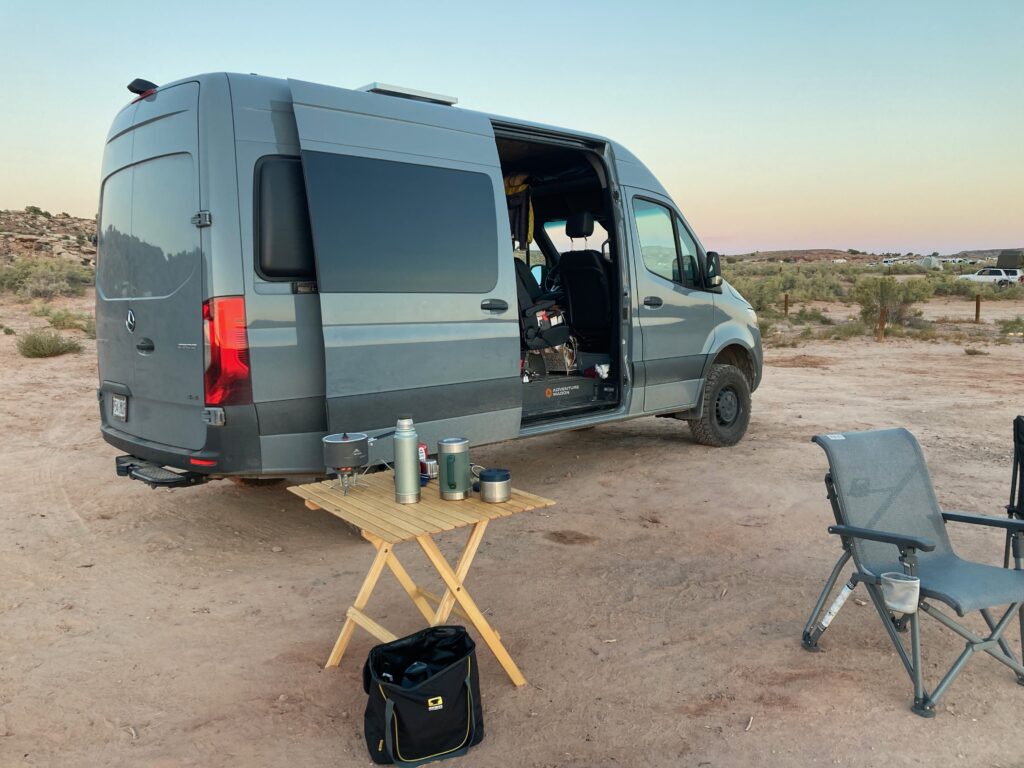Not everyone dreams of a white picket fence—some of us crave open roads, mountain views, and a home that moves with us. Whether you’re chasing sunsets down the coast or waking up to sunrise over desert plains, the right vehicle can turn that dream into a daily reality.
But not all vans and campers are built the same. Some offer rugged off-road chops, others prioritize cozy interiors, and a few manage to blend both like they were made for nomads by nomads.
So, whether you’re planning a weekend escape or going full-time on the road, these five vehicles are the ultimate road trip machines—each with something special to offer for the van life crowd and long-haul adventurers alike.
1. Toyota Sienna
The Toyota Sienna might not be the first vehicle that comes to mind when you hear “life on the road.” Still, these vans have built a solid reputation for durability, reliability, and overall dependability.
From older models dating back to the late 1990s to the latest all-wheel-drive hybrid versions available today, the Sienna is steadily gaining popularity among van life enthusiasts and adventure seekers alike.
Toyota has taken note of this growing interest and now offers the Woodland Edition as of 2022. This version reimagines the minivan as more SUV-like, with increased ground clearance and electronic on-demand AWD.
Although the lift is modest just 0.6 inches every bit helps when venturing off the beaten path.
Additional features of the Woodland include roof rails with crossbars, a 1,200W JBL sound system, and an AC power outlet capable of handling most household electronics.
Adding to its appeal, Toyota donates $250 to the National Environmental Education Fund (NEEF) for every Woodland Edition sold.
The Sienna is also available in a Hybrid version with AWD, achieving an impressive 35 miles per gallon combined.
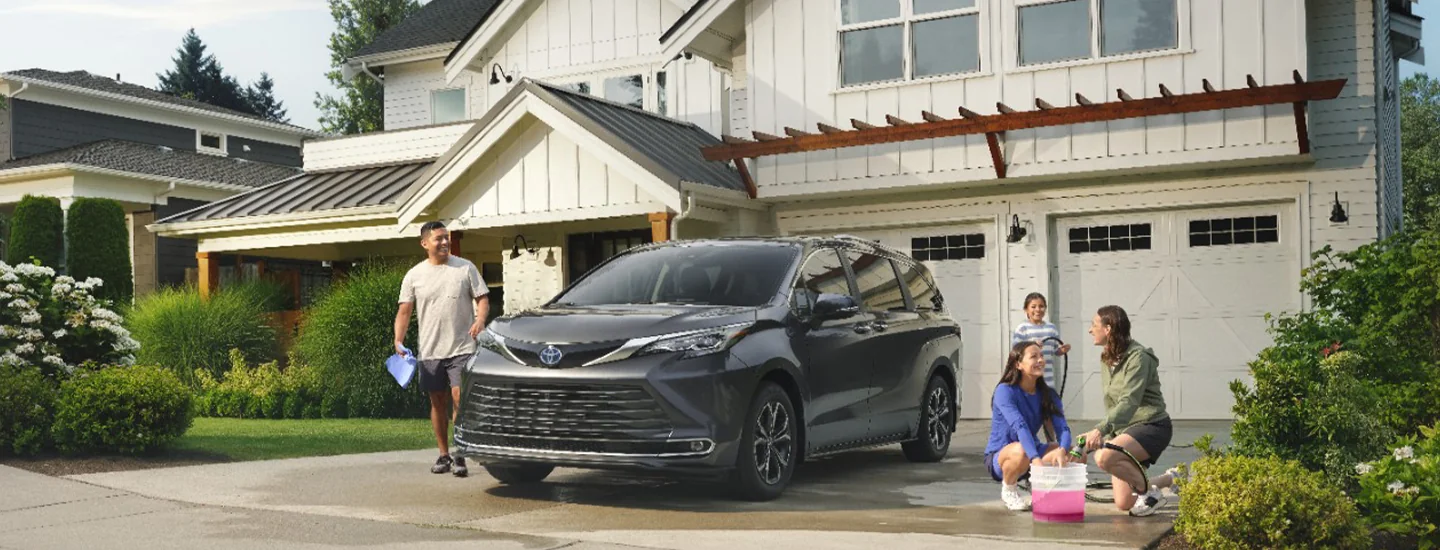
The rear seats can be folded flat into the floor, offering extra space and functionality. Its interior design leans toward the luxurious, providing exceptional comfort for long trips.
If spending $50,000 on a new AWD Sienna isn’t in your plans, you’ll be glad to know there are plenty of older models on the market at significantly more affordable prices.
This lower entry cost means you can dedicate more of your budget to customizing the interior to meet your travel needs.
While the Sienna may not match the rugged capability of an SUV, it’s far from limited to paved roads. Several aftermarket companies offer lift kits specifically for these vans, making it possible to fit larger all-terrain tires.
This upgrade expands your travel options, giving you access to trailheads, kayaking spots, and off-grid campsites that were previously unreachable.
Thanks to its proven reliability, roomy and flexible interior, and wealth of comfort features, the Sienna stands out as an excellent choice for anyone planning to hit the road for extended adventures.
Also Read: Top 10 Classic Pontiacs That Can Still Run Today
2. Ford Transit Connect
Now in its second generation in North America, the Ford Transit Connect stands out as a minivan that can easily double as a highly capable travel rig. If any vehicle on this list could be described as “sporty,” the Transit Connect would appeal most to those who enjoy driving.
Its handling is better than you might expect, and while it doesn’t rival a sports car, it still delivers an enjoyable experience behind the wheel.
Thanks to the ability to configure these vans from the factory with or without rear seats or windows, they provide an ideal blank canvas for anyone looking to embrace the van life lifestyle.
The Transit Connect first arrived in the U.S. market as a 2009 model, though earlier versions had already been sold in Europe. These vans are readily available used and are generally quite affordable.
One notable limitation is that Ford only made them with front-wheel drive, so they’re best suited for paved roads or light-duty dirt tracks.
If you plan to stick mostly to highways and well-traveled routes, the Transit Connect serves as a great platform for travel.
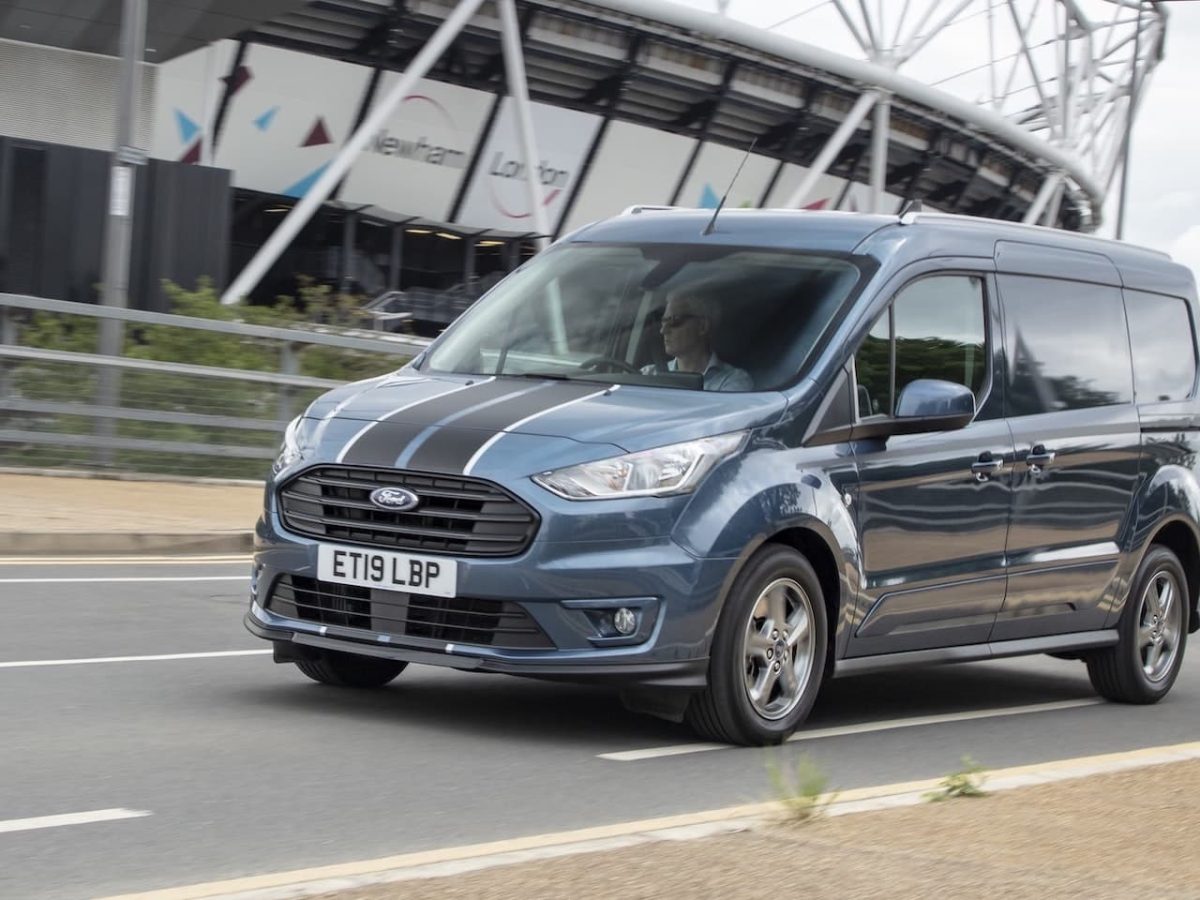
The second generation, produced from 2014 to 2023, was offered in two different lengths. The long-wheelbase variant is especially desirable for those looking for a roomier van life experience.
There are also several companies converting these vans into campers, including Ursa Minor, based in Portland, Oregon. They specialize in pop-top camper versions for the long-wheelbase 2014+ Transit Connect models.
All Transit Connects are powered by efficient four-cylinder engines. Older models feature a naturally aspirated 2.5L engine, while newer models may come with either a 2.5L or 2.0L engine for added performance.
A 1.6L EcoBoost turbocharged engine was available for a short time, although it was produced in very limited quantities. While none of these engines are known for speed, they certainly help keep fuel costs lower compared to larger vans.
With their blend of practicality, engaging driving dynamics, and widespread availability, Transit Connects make excellent platforms for life on the road. Plus, with Ford’s expansive dealership network, sourcing parts and finding service is typically hassle-free.
Ford has recently announced that it will stop importing the Transit Connect to the U.S. by the end of 2023, although it will continue offering the van in Europe and other markets.
3. Mitsubishi Delica Star Wagon
The Mitsubishi Delica first hit the market in the 1960s, with the name combining “delivery” and “car.” But it wasn’t until the arrival of the 1986 Delica Star Wagon that it earned its reputation as an iconic adventure van.
Though never officially sold in North America, the Star Wagon married a car-based unibody with a tough 4WD system including a low-range gear set giving it impressive off-road capability and making it a true go-anywhere vehicle.
The Delica lineup included a stunning variety of models: low-roof, high-roof, glass-top versions, cold-weather Chamonix editions, vans with bull bars, bench seats, captain’s chairs, and even built-in 12V coolers.
When the Delica Space Gear debuted in 1994, it brought a rounder, more modern minivan profile but retained the off-road strength and modular interior setup.
These models offered several powertrains, including gasoline engines and turbodiesels.Though the Star Wagons were relatively slow, they could cruise at 65 mph it just took some patience getting there.
The Space Gear models introduced after 1994 came with more powerful options, such as a 3.0L V6 or a 2.8L turbodiesel, which made highway driving much easier.
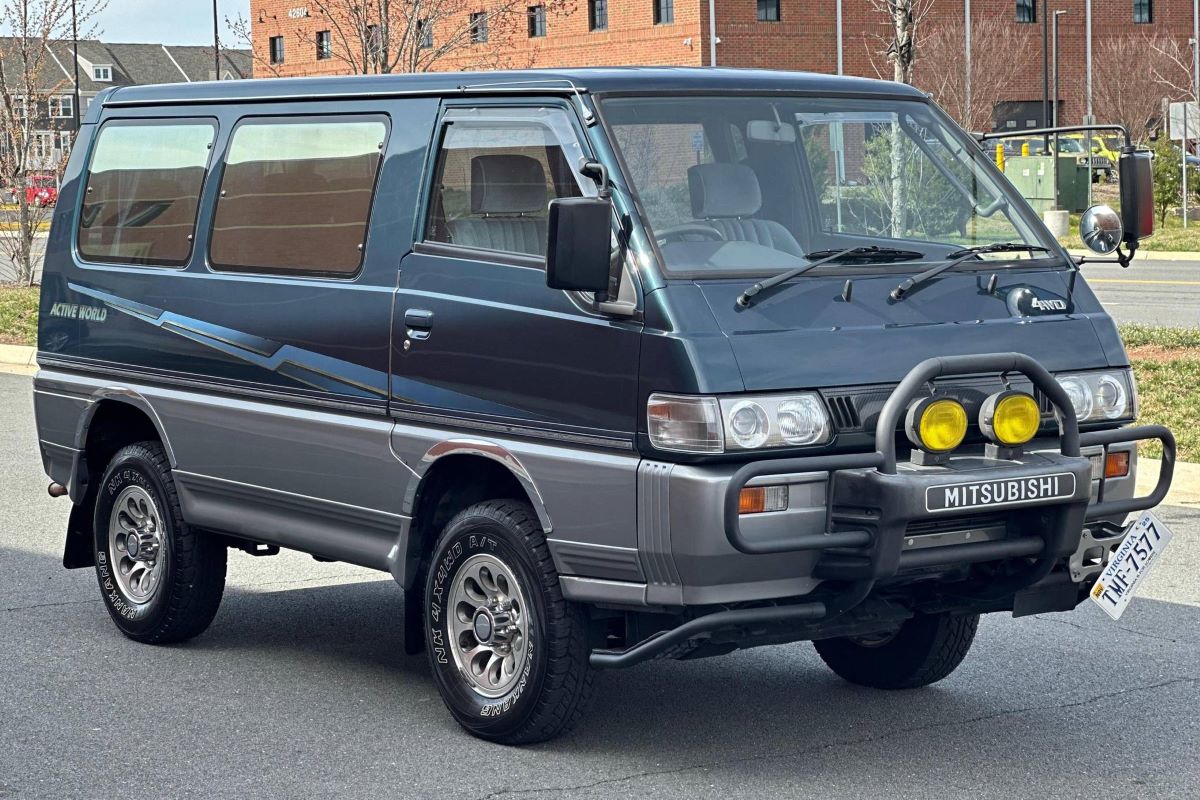
Despite never being sold officially in the U.S., Delicas that are at least 25 years old can be imported legally and registered in most states with the exceptions of Maine and Rhode Island for now.
Their combination of spacious interiors, robust drivetrains, and global availability make them an exceptional choice for anyone living life on the road.
Arguably the ideal configuration would be a 1994 or newer Delica Space Gear with a 2.8L turbodiesel engine, a high roof, and a long wheelbase.
That said, owning a foreign-market vehicle does come with a few caveats. Parts availability isn’t as seamless as it is for domestic vans.
However, Canadian shops where Delicas have been legal for import for over 15 years often have the parts you need.
Some components, like brake pads and rear rotors, are interchangeable with parts from the Mitsubishi Montero, which was sold in the U.S. For many enthusiasts, the advantages of owning a Delica far outweigh any drawbacks, making these distinctive vans beloved by overland travelers worldwide.
In fact, I personally own the 1994 Delica Space Gear pictured above and previously owned the white 1989 Delica Star Wagon shown here as well.
4. Volkswagen Vanagon
It almost goes without saying, but the VW Vanagon is a true classic. Offered in both 2WD and 4WD configurations with the 4WD models known as Syncros the Vanagon is a legendary minivan. Its lineage traces back to the original Microbus, the original pioneer of the minivan world.
People were embracing van life in these long before “van life” became a mainstream concept.
For decades, Vanagons have been beloved by travelers across the globe. The 4WD Syncro versions, especially those that have been customized, are highly sought after and can fetch prices upwards of $70,000, thanks to their off-road capability and luxurious camper-style interiors.
When outfitted with pop-top campers like those from Westfalia, their value climbs even higher.Over the years, countless Vanagons have been transformed into road-ready adventure vehicles, with Westfalia conversions being the most iconic.
Even 2WD models, despite lacking four-wheel-drive, are still pricey due to their proven track record and strong aftermarket ecosystem.
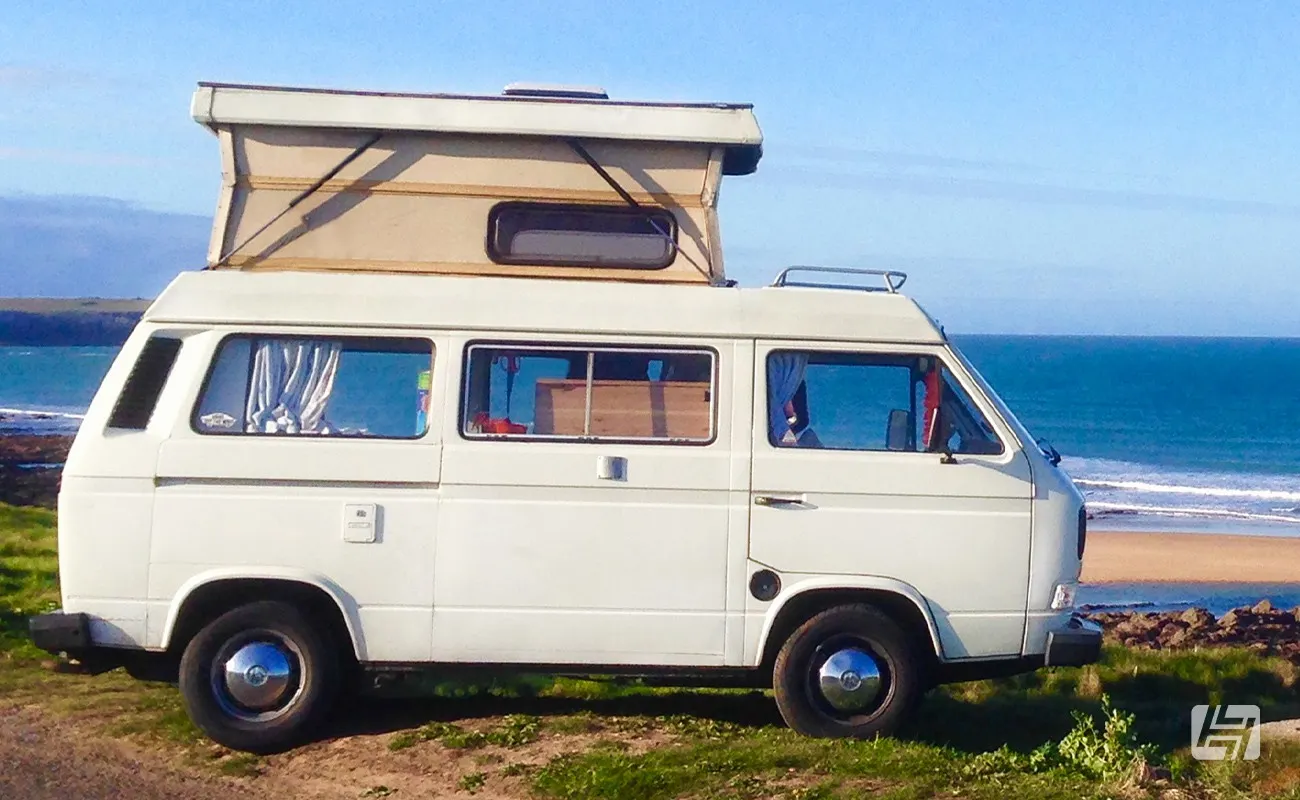
Though Vanagons may not be quite as dependable as some Japanese vans, they possess a distinct rugged charm and versatility. Of all the vehicles featured here, the Vanagon arguably has the richest history of full-time dwellers and road travelers making it their home.
Depending on your region, you’ll find more than 20 years’ worth of models to choose from, complete with a variety of engine options.
Performance isn’t their strong suit, but the global Vanagon owner community is fiercely loyal and often eager to assist fellow owners in need.
For those craving more power, many enthusiasts replace the original VW engines with modern Subaru motors, giving these classic German vans a much-needed performance upgrade.
The Vanagon remains a beloved icon a minivan before the term even existed in its modern context. If any one van could represent the spirit of minivan life on the road, it would undoubtedly be the Vanagon.
Also Read: 15 Best Cars for Students That Will Last Until Graduation
5. Chrysler Pacifica
I recently had the chance to spend a week driving a new Chrysler Pacifica Hybrid, and I have to admit, I was blown away by how impressive and refined it was.
Having grown up riding in a mid-’80s Dodge Voyager and a 1990s Chrysler Town & Country on a road trip from Minnesota to Mexico City in 1994, I can confidently say this is nothing like the old Chrysler vans with faux wood panels and tacky hubcaps. The Pacifica is a legit road trip machine!
The current Pacifica, which has been on the market since 2017, delivers exceptional comfort and convenience. Like Toyota’s Sienna, the Pacifica’s rear seats fold neatly into the floor.
By removing the middle-row captain’s chairs, the cabin transforms into a massive space perfect for camping, relaxing, or whatever else mini van lifers need to do.
I took out the seats, unrolled a double-wide sleeping bag, and still had ample room left for all my gear. I even had access to monitors in the front seat headrests for watching TV or gaming.
The panoramic glass roof on my Hybrid model was an added bonus perfect for stargazing at night.
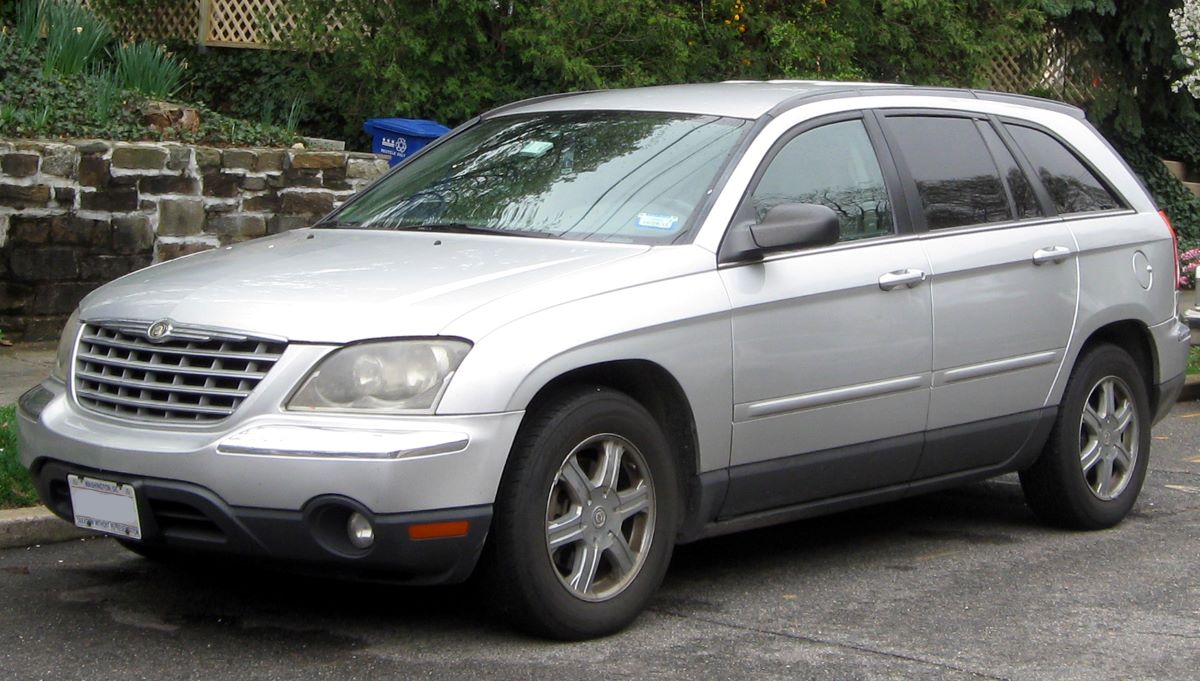
Not to mention, the front seats were heated, ventilated, and incredibly plush. Combine that with a top-tier infotainment system, and you’ve got a seriously capable ride that just happens to be a minivan.
The more time I spent in the Pacifica, the more I envisioned how easily it could become a full-time travel vehicle with the right interior setup.
Even without a fancy build, it cruised effortlessly on the highway and offered such a high level of comfort that long drives flew by without a hint of fatigue.
On top of all that, the Hybrid version delivers up to 82 MPGe or around 30 mpg running on gas alone not too shabby at all. And if you need all-wheel drive, there’s a Pacifica available for that, too. It features a 3.6L V6 engine putting out 287 horsepower.
While it doesn’t offer hybrid-like fuel efficiency, the AWD model makes up for it with added capability. And yes, you can even install modest lift kits to increase ground clearance and fit larger tires.
Chrysler helped pioneer the modern minivan, and after driving the new Pacifica, it’s clear they still know how to lead the pack.

